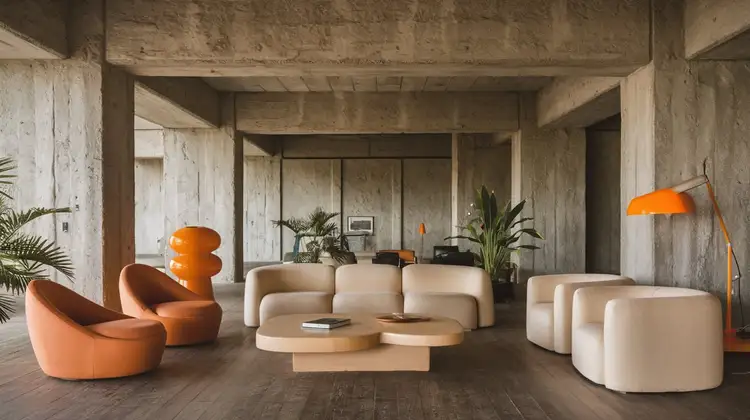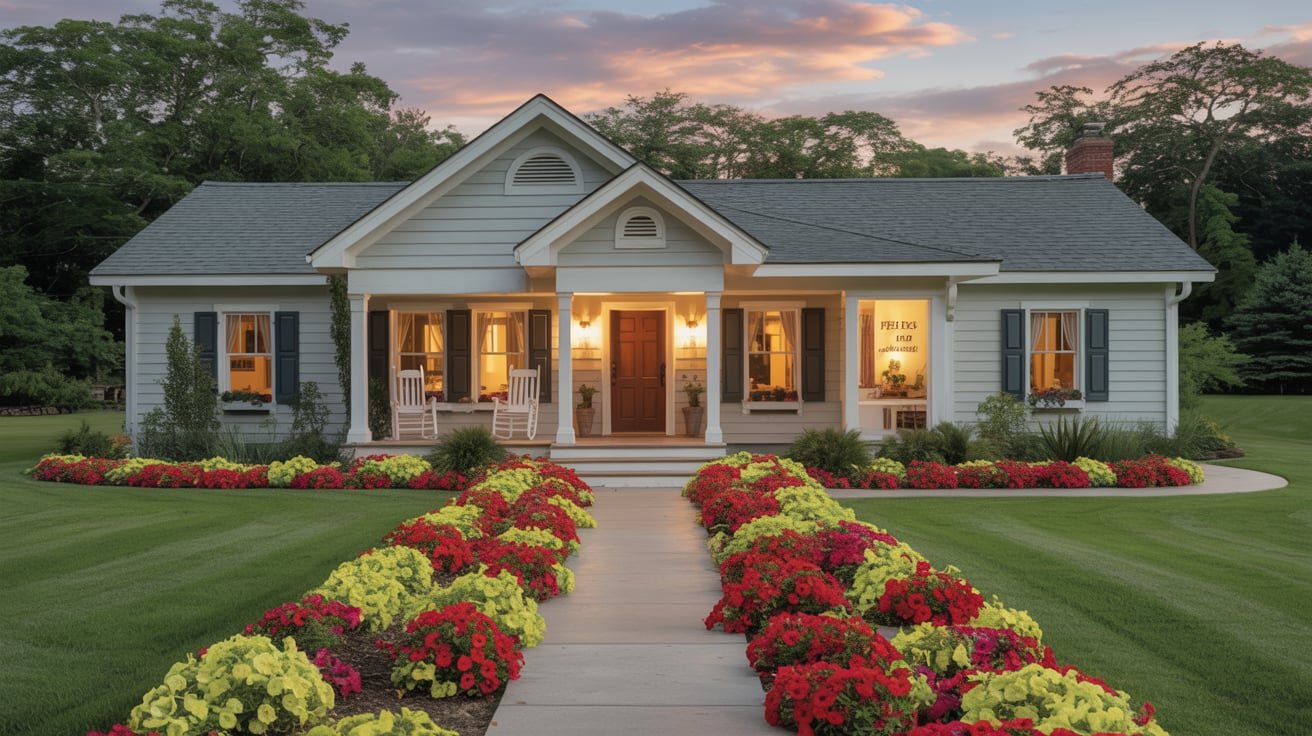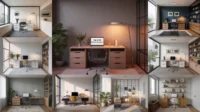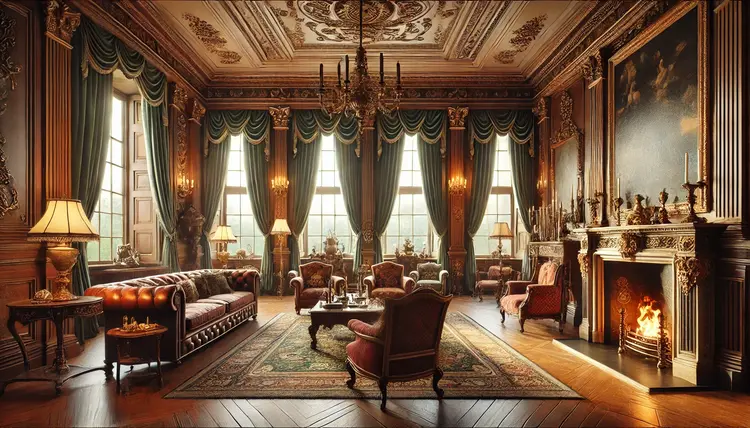Art Deco Interior Design | Glamorous & Timeless Decor
Published: 8 Jun 2025
Introduction
Art Decor layouts combine luxury with sophistication in addition to glamour. The design movement which started during the 1920s and 1930s maintains its appeal through its dramatic patterns as well as extravagant elements and strong visual contrasts. The architectural style of Art Deco interiors brings forth residences that maintain an everlasting luxurious feel along with timelessness.
This guide offers an extensive look at the core aspects of Art Deco design which covers both color choices and suitable furniture along with material selection and illumination elements and decorative design components. The high-traffic keyword placement in this article enables homeowners along with interior designers and decorative enthusiasts to design magnificent Art Deco-inspired living areas.
1. Understanding the Art Deco Style
During the Roaring Twenties which brought economic success together with cultural transformations and technological innovations rose the Art Deco movement. People were looking for contemporary and influential design while moving away from traditional decorative art.
Art Deco interiors configure from cubist and futuristic elements and classical architectural aspects to generate structured spaces that appear sleek. The aesthetic elements of Art Deco interiors were directly influenced by both Bauhaus and Hollywood Regency styles.
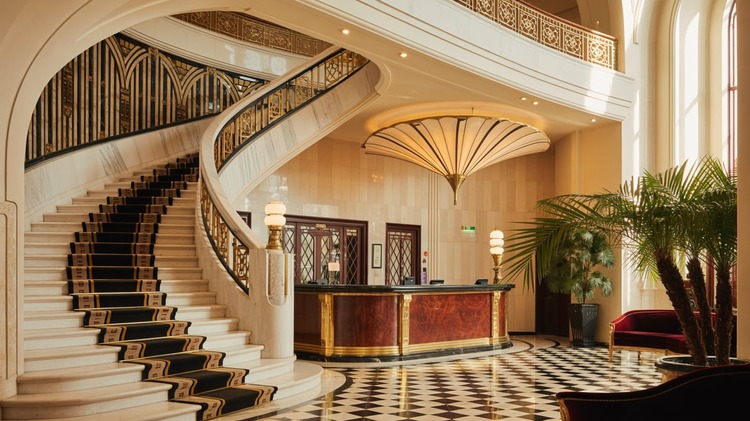
1.1 Origins and Evolution
The Art Deco design style gained its widespread popularity during the 1925 Paris-based exposition named Arts Décoratifs et Industriels Modernes. The movement rapidly expanded between Europe and America as well as Asia thereby influencing all aspects from architecture to automobiles to home interior design. The sophisticated Art Deco architectural style continues to be desired actively by builders who construct luxurious residential homes hotel accommodations together with public establishments.
1.2 Defining Features
The essential unique features of Art Deco interior design include:
- Art Deco design uses geometric motif families that include the Chevron pattern together with zigzag elements and sunburst motifs.
- The purpose of repetition together with symmetric forms helps create orderly spaces through straight lines.
- Art Deco interior design draws its luxury appeal from the use of marble combined with brass, chrome, lacquer and exotic wood materials.
- The complete color collection of deep blues and emerald greens together with black and gold serves to establish luxurious atmosphere.
- The appearance of glamour grows stronger with shiny surfaces and mirrors and finished products with polished metals.
- The application of ornate lighting fixtures with chandeliers and sconces produces grandeur in rooms.
- Any Art Deco interior gains eternal appeal through its distinguishing elements.
2. The color selection system of Art Deco interior design shapes the overall aesthetic
Set the Art Deco feeling through appropriate color arrangements in design schemes.
2.1 Classic Art Deco Colors
The most popular hues include:
- Black and Gold – A symbol of power and elegance.
- Deep Emerald Green – Brings richness and luxury.
- Royal Blue and Navy – Adds depth and sophistication.
- Platinum and Silver – Creates a futuristic, metallic touch.
- Warm Taupe and Cream – Softens the intensity of bold colors.
- A combination of these listed colors functions best for decorative wall treatments, furniture and decorative objects.
2.2 How to Use Art Deco Colors
- Obtain a balanced Art Deco appearance by using the following recommendations:
- Few applications of dark colors and deep green tones are sufficient otherwise they will create visual clutter.
- Different combinations of shiny and matt textures produce an aesthetically enhanced outcome for spaces.
- Metallic accents made from silver, gold and brass supply spaces with warmth and elegance.
- A space appears softer when furnished with neutral backgrounds which include beige and white and cream color schemes.
- Learning how to apply colors properly allows any setting to achieve the glamour of Art Deco design.
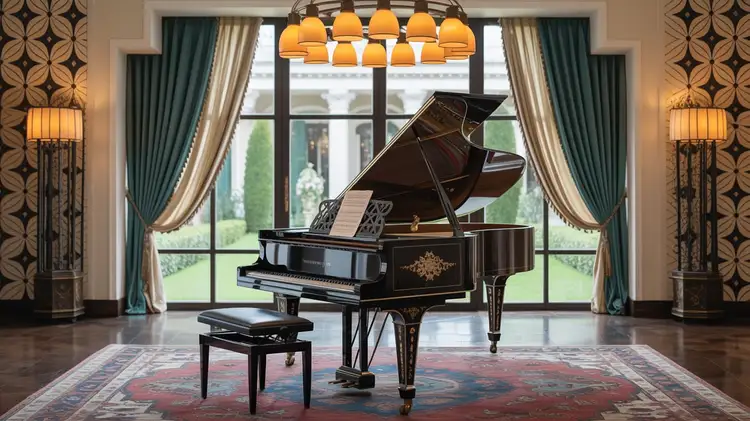
3. Iconic Art Deco Furniture & Materials
The main features of Art Deco furniture include its polished minimal lines as well as its sturdy shapes and finishing details.
3.1 Art Deco Furniture Styles
Signature furniture pieces include:
- Both curved sofas and club chairs come with velvet leather upholstery.
- Modern lacquered sideboards manufacture high-gloss surfaces that create elegant appearance.
- Glass and Chrome Coffee Tables – A fusion of industrial and elegance.
- Geometric Headboards – Adds visual interest to bedrooms.
- The furnishing items generate a powerful visual impression.
3.2 Luxurious Materials
Art Deco interiors showcase opulence through materials. Common choices include:
- Marble along with Granite acts as material choice for room flooring and countertops and tabletops.
- Exotic Woods (Zebrawood, Mahogany) – Adds depth and texture.
- Mirrored and glass elements achieve a bright and glamorous appearance.
- Velvet and Leather Upholstery – Creates a rich, tactile experience.
- When designers unite these materials in interiors the results become luxurious and artfully selected.
4. Statement Lighting for Art Deco Homes
Art Deco interior lighting functions equally as a practical illumination mechanism and serves a decorative purpose.
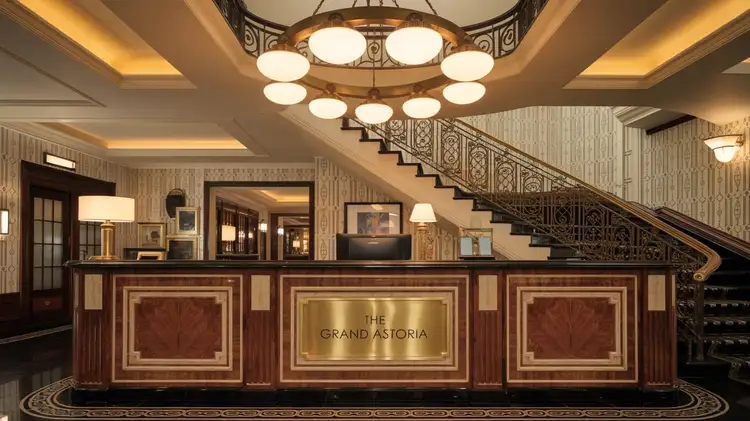
4.1 Popular Art Deco Light Fixtures
Key lighting styles include:
- Crystal Chandeliers – Adds dramatic glamour to living rooms and entryways.
- Tiered Pendant Lights will be your centerpiece because they create a dramatic focal point.
- Sleek Wall Sconces – Enhances symmetry and structure.
- Table Lamps with Sculptural Bases – Adds artistic flair.
- Choosing statement lighting transforms interiors instantly.
4.2 Ideal Placement of Art Deco Lighting
A chandelier placed above the dining table will elevate the grand ambiance.
- Wall sconces along hallways – Enhances architectural details.
- Floor lamps near lounge areas – Adds depth and ambiance.
- Strategic lighting maximizes Art Deco elegance.
5. Art Deco patterns appear on both walls and floors
Interior walls together with flooring need to embody the powerful elements of Art Deco decoration.
5.1 Decorative Wall Treatments
Geometric Wallpaper features zigzags with sunbursts together with chevrons that define the look.
Choosing glossy or lacquered walls will produce a surface that appears deeper and richer in depth.
Panel Molding with Gold Accents – Enhances sophistication.
5.2 Flooring Choices
- The finish of Black and White Marble Tiles represents a timeless Art Deco flooring selection.
- Herringbone or Chevron Wood Floors – Adds timeless elegance.
- Geometric Rugs – Complements bold wall treatments.
- The selected design choices produce a beautifully cohesive and elegant Art Deco interior design.
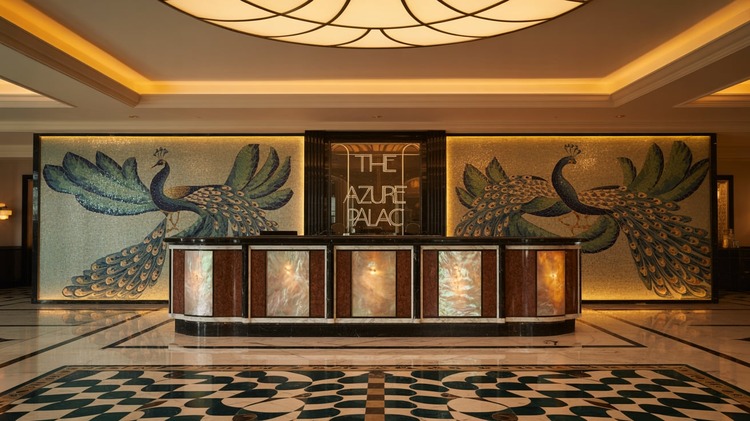
6. Accessories & Art in Art Deco Design
Art Deco interiors achieve their complete expression with the added finishing decorations.
6.1 Essential Art Deco Accessories
Sunburst Mirrors – A signature Art Deco element.
Bold Ceramic Vases – Often with abstract patterns.
Glass sculptures function to bring refinement when integrated into side tables.
6.2 Art Deco-Inspired Artwork
Cubist Paintings – Reflects the era’s artistic movement.
Black and Gold Posters – Adds vintage elegance.
Metal Wall Art – Incorporates industrial touches.
These decorative items bring an additional touch of glamorous Art Deco style.
FAQs
The defining characteristics of Art Deco interior design can be described as follows?
This style of architecture displays extravagant geometric designs with elegant materials as well as smooth surface elements.
Which Art Deco additions are most suitable for modern homes?
Add Art Deco decoration through the use of statement lighting and geometric patterns as well as mirrors and metallic accents.
The combination of Art Deco with additional architectural styles is it possible.
Art Deco operates harmoniously together with both Hollywood Regency along with Mid-Century Modern decorating styles.
Conclusion
Art Deco interior design stands as one of the enduring elegant designs that continues to look stylish in any era.s. By incorporating geometric patterns, rich colors, opulent materials and bold furnishings, any space can achieve an authentic Art Deco aesthetic.

- Be Respectful
- Stay Relevant
- Stay Positive
- True Feedback
- Encourage Discussion
- Avoid Spamming
- No Fake News
- Don't Copy-Paste
- No Personal Attacks

- Be Respectful
- Stay Relevant
- Stay Positive
- True Feedback
- Encourage Discussion
- Avoid Spamming
- No Fake News
- Don't Copy-Paste
- No Personal Attacks
